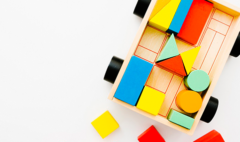Number war games 4
April 9, 2021 2021-04-09 12:11Number war games 4
Number war games 4
NUMBER WAR GAMES IV: Comparison of Integers
Game Nine: Visual Clustering and Comparison of Integers
This game can be played with two or three players but is most effective between two players.
Objectives: To learn the concept of integers and comparing fractions
Materials: Take an ordinary deck of playing cards including jokers and face cards. The game is more effective if cards are without numbers at the corners. But even if you cannot get such cards, you can use an ordinary deck of cards. Each card is identified as follows: The black cards have positive values. For example, the three of spades and clubs will be denoted as +3. The red cards have negative values. For example, the three of diamonds and three of hearts will be given a value of -3. The face cards of jack, queen, and king have a numeral value of ten. The sign of the numeral is determined by the color of the card. The joker can assume any different value.
How to Play:
- The whole deck is divided into two equal piles.
- Each child gets a pile of cards. The cards are kept face down.
- Each person displays a card face up. The bigger card wins. For example, one has the three of hearts (-3) and the other person has the seven of diamonds (-7). The three of hearts (-3 is bigger than -7) wins. Similarly, if the first person has the two of clubs (+2) and the other person has the eight of diamonds (-8), the two of clubs wins (+2 > -8). The winner collects all cards.
- If both players have the same value cards, they declare war and each one places three cards face down. Then each one turns a fourth card face up. The bigger fourth card wins. The winner collects all cards.
- The first person with an empty hand loses.
This is a very appropriate game when the concept of integers is being introduced and for children who have not mastered number conceptualization. The concept of integers, just like number conceptualization, is dependent on three interconnected skills: one-to-one correspondence, visual clustering, and ordering. This game develops all three of these prerequisite skills. Children with a lack of understanding of integers have a great deal of difficulty learning operations on integers. They continue to count on fingers and derive integer relations by sequential counting on the number line or other sequential counting materials. Students who have not mastered operations with integers make many more errors in pre-algebraic and algebraic operations. This game and the next games help students master integer operations.
Game Ten: Combining Integers
Objectives: To master adding and subtracting fractions
Materials: Same as above
How to Play:
- The whole deck is divided into two equal piles.
- Each child gets a pile of cards. The cards are kept face down.
- Each person turns two cards face up. The two cards represent two integers. Each one finds the result from combining the two integers. In combining the two integers one uses the following patterns.
- Same signs (same colors), you add and keep the common sign. For example, the four of clubs (+4) and five of spades (+5). Their sum will be written as + 4 + 5 = +9. Similarly, -4 -6 = -10 have numerals 4 and 6 with the same sign -, so they become numbers -4 and -6, and their sum will be written as -4 -6 = -10.
- Opposite signs (different colors), you subtract and keep the sign of the larger numeral. For example, -5 + 10 = + 5. Here the numerals 5 and 10 have opposite signs. We subtract 5 from 10 and keep the sign + of the larger numeral 10. Similarly, -7 + 4 = -3. The numerals 7 and 3 have opposite signs, -and +. We subtract 4 from 7 and keep the -sign of numeral 7.
Once again, the bigger sum wins. For example, one has the three of hearts (-3) and a king of hearts (-10), the sum is -13. The other has the seven of diamonds (-7) and the seven of hearts (-7), the sum is -14. The first person wins (-13 > -14).
Let us take another example. One player has the three of clubs (+3) and the three of diamonds (-3). The sum is 0. The other has the four of clubs (+4) and the two of diamonds (-2). The sum is +2. The second person wins. The winner collects all cards.
- If players have the same sum, they declare war, and each one puts down three cards face down. Then each one turns two cards face up. The bigger sum wins. The winner collects all cards.
- The first person with an empty hand loses.
This is an appropriate game for students who have not mastered/automatized addition of integers. This game teaches, reinforces, and helps them automatize integer combinations.
Initially, children can count the objects on the cards. For example, if one has the three of clubs and four of hearts, each black icon cancels each red icon. In this case, one club will nullify one heart. Three hearts will nullify three clubs. There is one heart extra. It will be left out. Therefore, we have +3 -4 = -1.
Although children may initially count objects, fairly soon they begin to rely on visual clusters to recognize and find sums. In one game, children will use more than five hundred sums. Within a few weeks, they can master addition and subtraction of integers.
Game Eleven: Multiplying Integers
Objective:To master multiplication of integers
Materials: Same as above
How to Play:
- The whole deck is divided into two equal piles.
- Each player gets a pile of cards. The cards are kept face down.
- Each person displays two cards face up. The two cards represent two integers. Each one finds the result from multiplying the two integers. In multiplying the two integers one uses the following patterns about multiplying:
- + × + = +
- -× -= +
- + × -= –
- -× += -.
For example, +4 × +5 = + 20, -4 × -5 = + 20, +4 × -5 = -20, and -4 × +5 = -20.
Once again, when playing the game, the same rules apply: the bigger product wins. For example, one has the three of hearts (-3) and a king of hearts (-10), the product (-3 × -10) is + 30. The other has the seven of diamonds (-7) and seven of hearts (-7), the product (-7 × -7) is + 49. The second person wins (+ 40 > +30).
Let us take another example. One person has the three of clubs (+3) and three of diamonds (-3). The product (+3 × -3) is -9. The other has the four of clubs (+4) and two of diamonds (-2). The product (+4 ×-2) is -8. The second person wins (-8 > -9). The winner collects all cards.
- If both players have the same product, they declare war and each one places three cards face down. Then each turns two cards face up. The bigger product wins. The winner collects all cards.
- The first person with an empty hand loses.
This game is appropriate for students who have not mastered/automatized the multiplication of integers. This game teaches, reinforces, and helps them automatize integer multiplication.
Initially, students can recall facts sequentially. However, soon they begin to rely on visual clusters to recognize and find the products with sequentially recalling the multiplication tables. In one game, children will use more than five hundred products. Within a few weeks, they can master the multiplication of integers.
Game Twelve: Dividing Integers
Objectives: Mastering division of integers
Materials: Same as above
How to Play:
- The whole deck is divided into two equal piles.
- Each student gets a pile of cards. The cards are kept face down.
- Each person displays two cards face up. The two cards represent two integers. Each one finds the result from dividing the two integers. In dividing the two integers one uses the following patterns about division:
- + ¸+ = +
- -¸-= +
- + ¸-= –
- -¸+= -.










